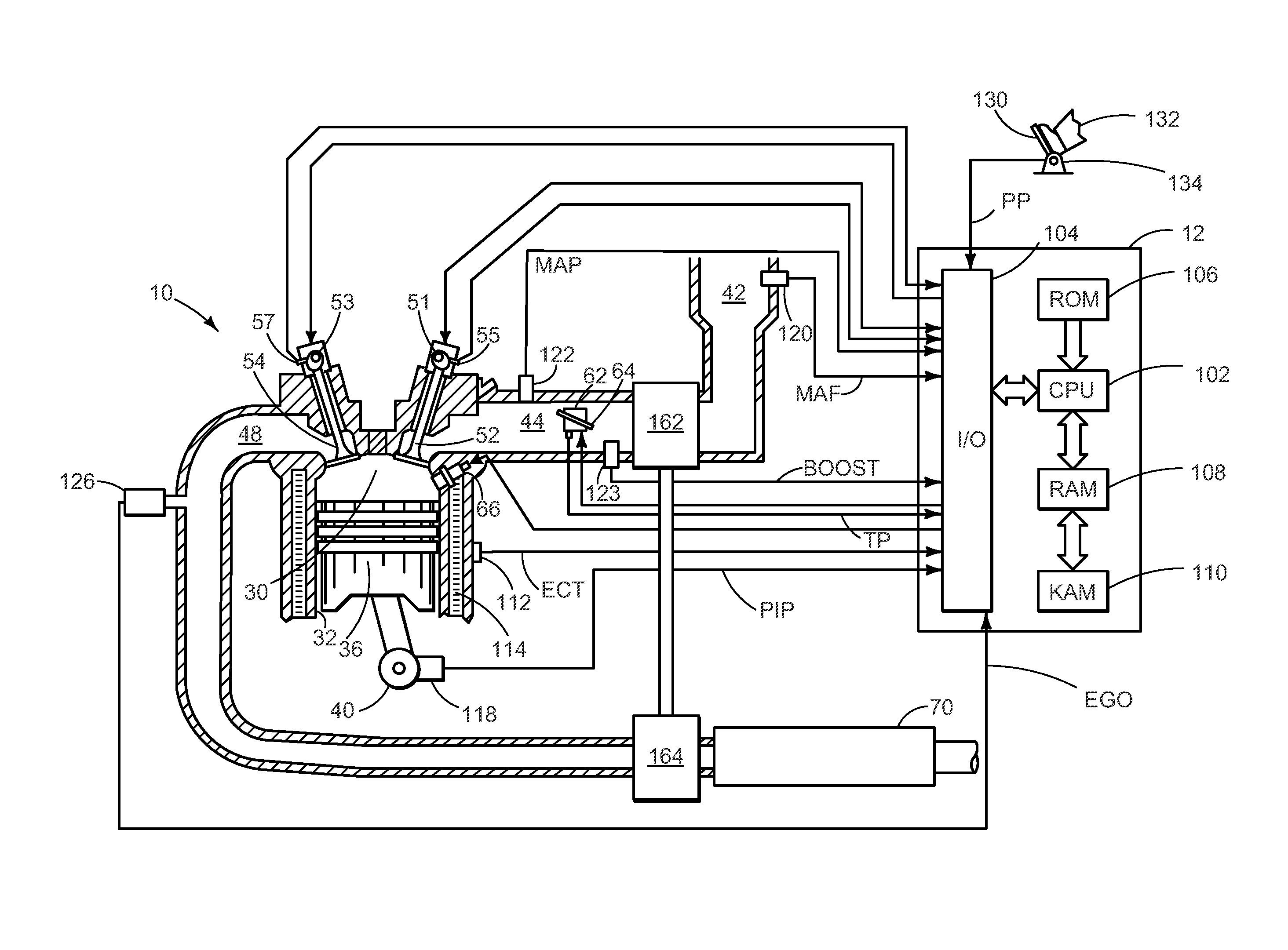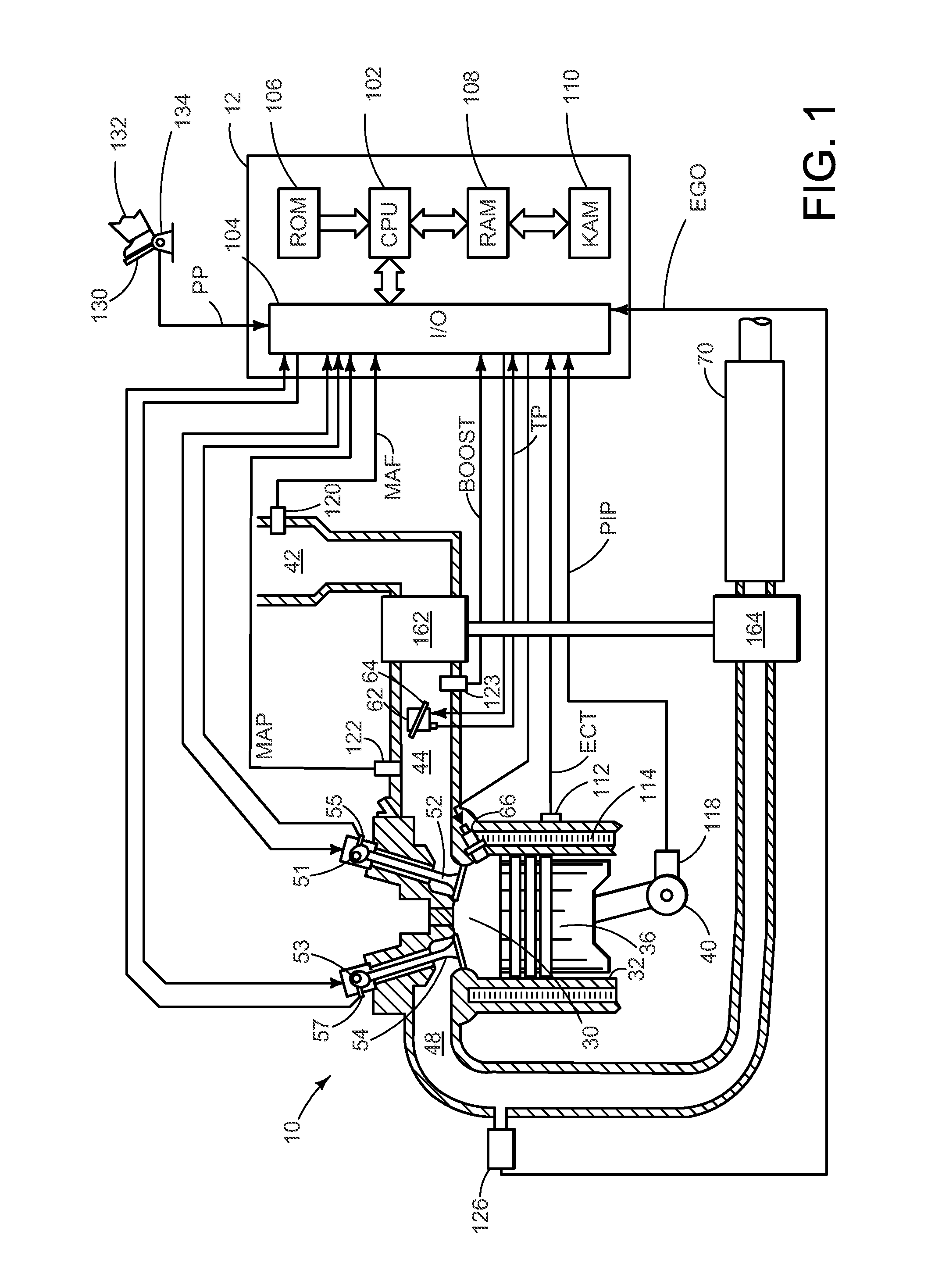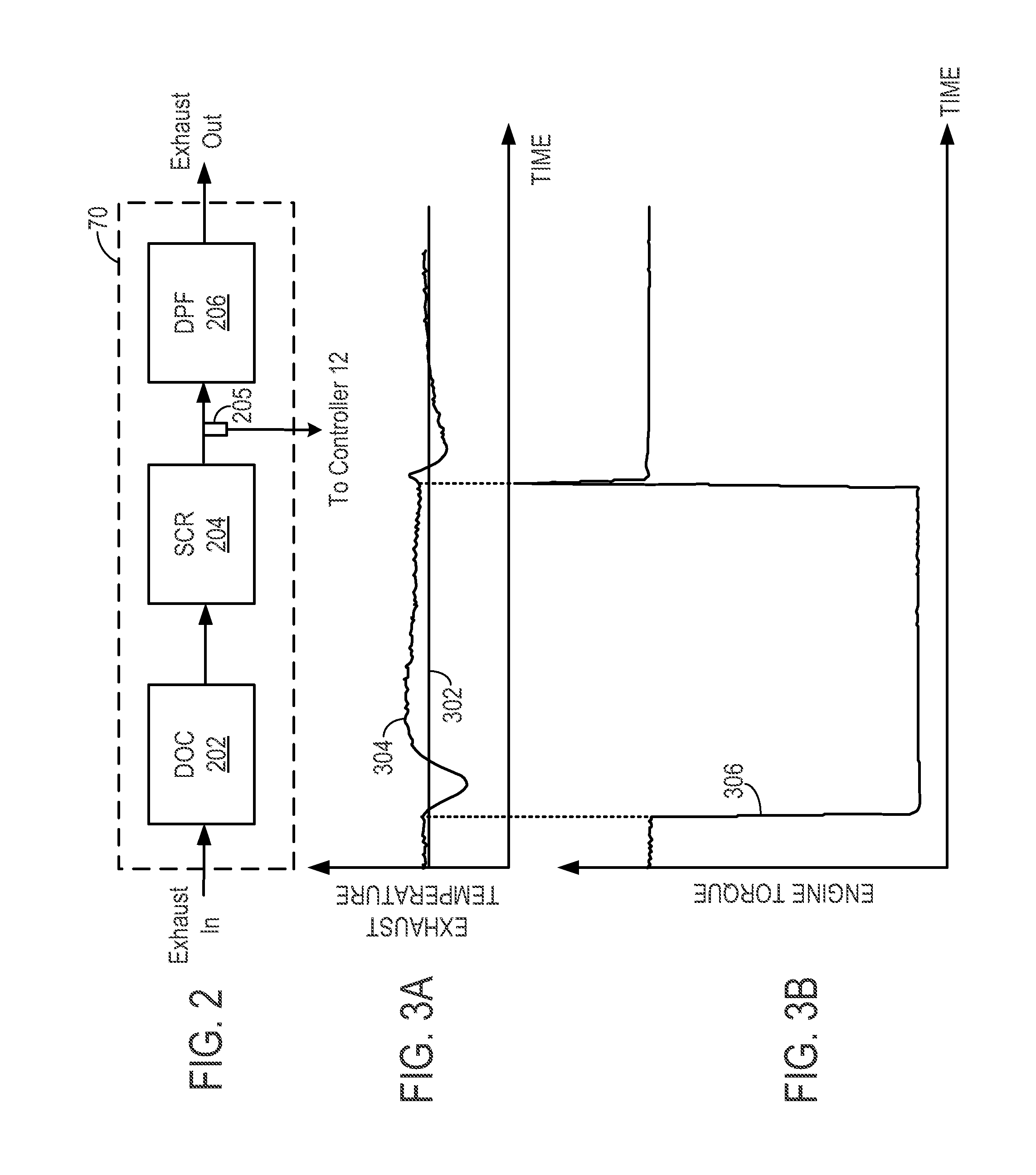Controlling regeneration of an emission control device
a technology of emission control device and regeneration, which is applied in the direction of electrical control, machines/engines, mechanical equipment, etc., can solve the problems of affecting the operation of the emission control device, the upper temperature limit of the exhaust component and the emission control device that cannot be exceeded, and the temperature may temporarily rise too high, so as to reduce the amount of trapped particulate matter and reduce the amount of soot emissions
- Summary
- Abstract
- Description
- Claims
- Application Information
AI Technical Summary
Benefits of technology
Problems solved by technology
Method used
Image
Examples
Embodiment Construction
[0014]It may be difficult to accurately control regeneration of a diesel particulate filter (DPF) in a turbocharged compression ignition internal combustion engine, such as shown in FIGS. 1-2, during transient operation (e.g. engine acceleration or deceleration) due to various factors. The factors may include the disparity in response time between the fuel path and the air path in the intake. In some instances the response of the fuel path may be faster than the response of the air path. That is to say that during transient engine operation the amount of fuel is injected into the intake manifold may correspond to steady state levels while the air-flow within the intake manifold is still changing according to transient conditions. Therefore, as shown in FIG. 3A, an overdose or an underdose of fuel may occur while the engine is in transient operation. Consequently, the overdose or underdose may increase or decrease the exhaust temperature above or below levels which may facilitate reg...
PUM
 Login to View More
Login to View More Abstract
Description
Claims
Application Information
 Login to View More
Login to View More - R&D
- Intellectual Property
- Life Sciences
- Materials
- Tech Scout
- Unparalleled Data Quality
- Higher Quality Content
- 60% Fewer Hallucinations
Browse by: Latest US Patents, China's latest patents, Technical Efficacy Thesaurus, Application Domain, Technology Topic, Popular Technical Reports.
© 2025 PatSnap. All rights reserved.Legal|Privacy policy|Modern Slavery Act Transparency Statement|Sitemap|About US| Contact US: help@patsnap.com



